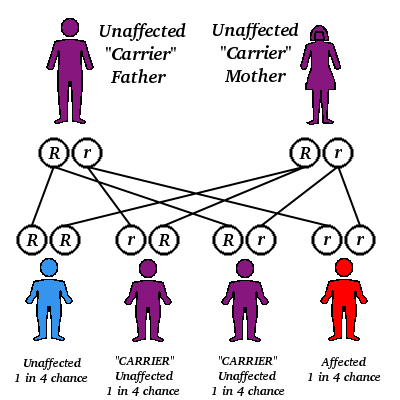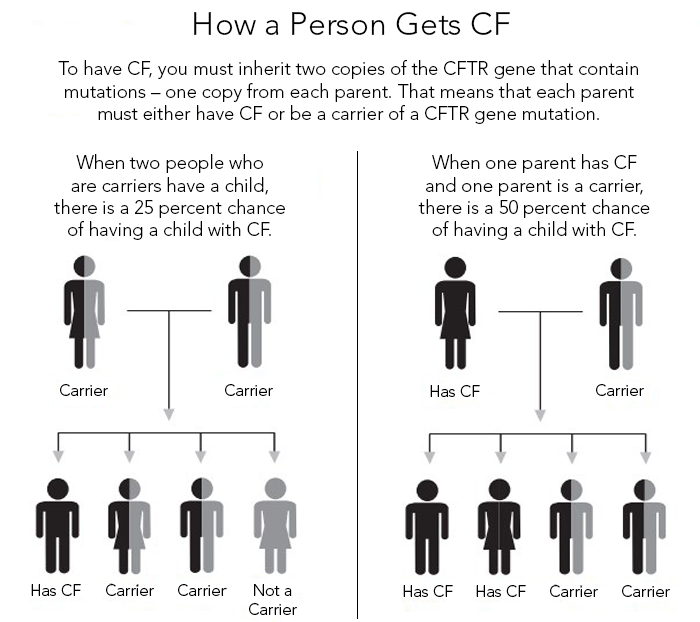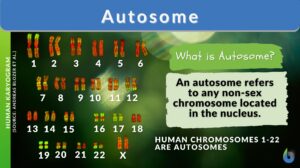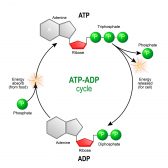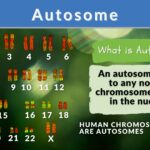
Autosome
n., plural: autosomes
[/ˈɔɾəˌsoʊm]
Definition: Any chromosome apart from sex chromosomes
Table of Contents
Autosomes can be described as the non-sex chromosomes that play diverse roles in the human body like harboring genes for the body’s metabolism, functioning, and growth. These chromosomes occur in pairs (22 pairs) and are 44 in number in human beings. When we discuss the core concepts of Genetics, chromosomes are the first word that pops into our minds. Isn’t it true? So, when we start with the idea of chromosomes, we must do it objectively. For this reason, geneticists have classified chromosomes into two major categories:
- Autosomes (Autosomal chromosomes)
- Allosomes (Gonosomes or Sex Chromosomes)
In this lesson, we will focus on the idea of autosomes. We have also made a comprehensive table to contrast autosomes with allosomes for a special read. Several misconceptions are awaiting that will be busted as you reach the last section of this article.
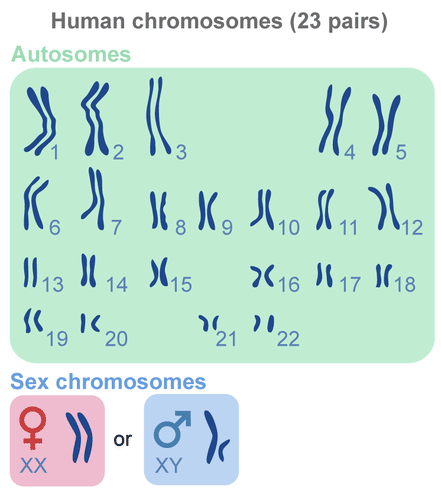
Autosome Definition
An autosome is defined as any chromosome other than the sex chromosomes. These chromosomes exist in pairs in the somatic cells in contrast to their solo presence in germinal or sex cells, i.e. gametes. Autosomes are primarily associated with the various metabolic functions of the cell.
NOTE: An important point to note here is that certain autosomes do play a role in phenotypic sex determination! The common belief is that they don’t have any role to play in sex determination. Research evidence indicates that a gene (i.e., SOX9 gene) of autosome 17 has an effect on how the gonads will develop, for instance, a dysfunctional SOX9 gene has been found to be associated with sex reversals. (Ref.1, 2, 3)
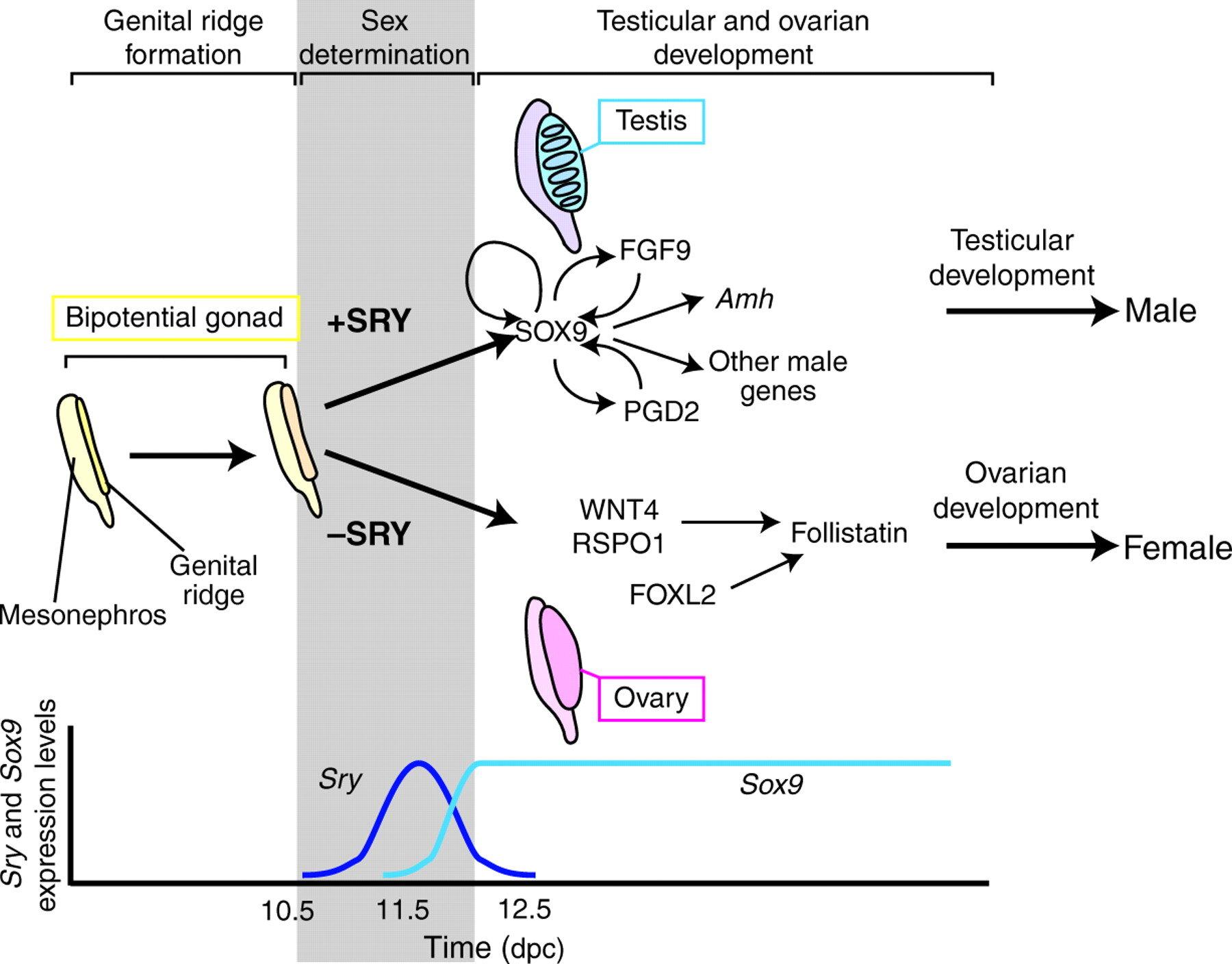
Autosomes in Humans
Human autosomes, the non-sex human chromosomes, are integral components of the human genome. Consisting of 22 pairs, autosomes carry a wealth of genetic information that governs numerous biological processes. These chromosomes play a pivotal role in various aspects of human development, including metabolic pathways, cellular homeostasis, and genetic disorders. Autosomal abnormalities can have profound implications for human health and are the focus of extensive research.
Understanding the intricate functions and interactions of autosomes is crucial for unraveling the complexities of human genetics and advancing personalized medicine.
- The human genome is composed of 23 pairs of chromosomes, with autosomes (22 pairs) comprising the majority.
- They hold a vast repository of genetic information that governs various aspects of human biology.
- Understanding the role and significance of autosomes in human genetics is crucial for uncovering the complex interplay of genes, their expression, and their impact on health and disease.
- Autosomes and Metabolic Pathways: Autosomal genes play a vital role in metabolic processes, regulating energy production, nutrient metabolism, and the synthesis of essential molecules which is discussed in detail in the next section of the article. Variations or mutations in these genes can disrupt metabolic pathways that can lead to metabolic disorders like diabetes, phenylketonuria, or glycogen storage diseases.

Figure 3: Inheritance pattern of an autosomal recessive disease called “phenylketonuria“. Image Credit: McGill - Autosomes and Cellular Homeostasis: Autosomes are essential for maintaining cellular homeostasis. Disruptions in autosomal genes involved in cellular homeostasis can lead to electrolyte imbalances, impaired cell signaling, and malfunctioning cellular processes.
- Autosomes and Genetic Disorders: Aberrations in autosomal genes can give rise to a wide range of genetic disorders. Autosomal dominant disorders like Huntington’s disease or Marfan syndrome result from mutations in a single copy of an autosomal gene. Autosomal recessive disorders like cystic fibrosis or sickle cell anemia require both copies of an autosomal gene to be mutated for the disorder to manifest. Studying autosomal genetic disorders provides valuable insights into disease mechanisms and paves the way for targeted therapies and genetic counseling for the human creed.

Figure 4: An infographic showing how CF is inherited. Image Credit: CFF.org - This is why autosomes form the backbone of human genetics as they hold the key to our intricate biological processes and susceptibility to genetic disorders. Investigating the functions and interplay of autosomal genes is crucial for understanding human health and disease. Advances in genomic research and technologies continue to unveil the complex nature of autosomes, eventually opening new avenues for personalized medicine and genetic therapies. By unraveling the mysteries of autosomes, we enhance our understanding of the intricate workings of the human genome, ultimately improving healthcare outcomes for individuals around the world.
- The entire DNA that autosomes bear is collectively called “atDNA” or “auDNA”.
Autosomes Etymology
The word autosomes is derived from two Greek words “autos” meaning ‘self’ and “soma” meaning ‘body’.
Watch this vid about autosomes vs. sex chromosomes:
Biology definition:
An autosome refers to any chromosome not considered a sex chromosome. Autosomes are mainly associated with the various metabolic functions of the cell. They occur in pairs in somatic cells and singly in sex cells (gametes). In humans, a somatic cell normally contains 23 pairs of chromosomes (total=46 chromosomes). Twenty-two (22) of these pairs will be autosomes, and only one of them will be a pair of sex chromosomes (the X and Y chromosomes).
Etymology: from Ancient Greek σῶμα (sôma), meaning “body”.
Function Of Autosomes
Autosomes are primarily associated with the various metabolic functions of the cell. They carry a wide range of genes that are essential for the normal functioning and maintenance of the body. Some of the most important functions to list are:
- Metabolic Functions: Autosomal genes play a crucial role in regulating metabolic processes within the cell. These genes are involved in various metabolic pathways like energy production, protein synthesis, lipid metabolism, carbohydrate metabolism, and nucleic acid metabolism.
- Enzyme Production: Autosomal genes code for enzymes that catalyze specific biochemical reactions. Enzymes are essential for facilitating chemical reactions involved in metabolism like breaking down nutrients, synthesizing cellular components, and removing waste products.
- Cellular Homeostasis: Autosomes carry genes that regulate cellular homeostasis which helps in maintaining a stable internal environment necessary for optimal cellular function. These genes control ion channels, transporters, and receptors involved in maintaining the balance of ions, water, and other molecules within cells.
- Cell Signaling: Autosomes contain genes that are involved in cell signaling pathways. These pathways facilitate cell communication and coordination of their activities. Autosomal genes code for receptors, signaling molecules, and transcription factors that regulate gene expression and cellular responses to external signals.
- Immune Response: Autosomal genes are responsible for producing immune system components. They encode proteins involved in recognizing and eliminating foreign pathogens, activating immune cells, and regulating immune responses to maintain immune homeostasis.
- Hormone Regulation: Autosomal genes play a role in the synthesis, secretion, and regulation of hormones. Hormones are signaling molecules that control various physiological processes, including growth, development, metabolism, reproduction, and homeostasis.
- Cellular Structure and Function: Autosomal genes are involved in the formation and maintenance of cellular structures. They code for proteins that make up the cytoskeleton, cell adhesion molecules, membrane transporters, and receptors which ensures the proper structure and function of cells.
- DNA Repair and Replication: Autosomes carry genes responsible for DNA replication and repair mechanisms. These genes are crucial for maintaining the integrity and stability of the genome which helps in the prevention of mutations and assurance of accurate transmission of genetic information during cell division to daughter cells.
- Cellular Respiration: Autosomal genes are involved in cellular respiration; the process by which cells convert nutrients into energy. These genes code for proteins involved in aerobic respiration, including those required for the electron transport chain and ATP synthesis.
- Xenobiotic Metabolism: Autosomes carry genes involved in xenobiotic metabolism; the process of metabolizing and eliminating foreign substances or drugs from the body. These genes code for enzymes involved in drug metabolism, detoxification, and the breakdown of environmental toxins.
It’s important to note that while autosomes are primarily associated with metabolic functions, they also carry genes related to other cellular processes and traits that are not directly involved in metabolism. The diversity of genes present in autosomes contributes to the overall complexity and functionality of the organism. Here’s a table to know some of the common examples of the metabolism-linked genes present in the autosomes.
Table 1: List of different genes present on autosomes with their specific functions. | |
|---|---|
| Function | Examples of Genes |
| Metabolic Functions | Glucose-6-phosphate dehydrogenase (G6PD), APOE, INSR |
| Enzyme Production | Lactase (LCT), Cytochrome P450 (CYP450) |
| Cellular Homeostasis | Sodium-potassium ATPase (ATP1A1), Aquaporin (e.g., AQP1) |
| Cell Signaling | Epidermal growth factor receptor (EGFR), CREB1 |
| Immune Response | Major histocompatibility complex (MHC), Interleukin-6 (IL6) |
| Hormone Regulation | Thyroid hormone receptor (THRA, THRB), Insulin-like growth factor 1 (IGF1) |
| Cellular Structure and Function | Actin (ACTB), Integrin (e.g., ITGA1, ITGB1) |
| DNA Repair and Replication | BRCA1, BRCA2, DNA polymerase (e.g., POLB) |
| Cellular Respiration | Cytochrome c oxidase (e.g., COX1), ATP synthase (e.g., ATP5B) |
| Xenobiotic Metabolism | Cytochrome P450 (e.g., CYP2D6), Glutathione S-transferase (e.g., GSTM1) |
Data Source: Akanksha Saxena of Biology Online
Autosomal Disorders
Autosomal disorders are genetic disorders or conditions that result from changes in genes on autosomes. Those changes are:
- Abnormalities
- Defects
- Faults
- Mutations
These disorders can affect individuals of any gender and are inherited following specific patterns.
Autosomal disorders can manifest as dominant or recessive traits.
- Autosomal dominant disorders: Single (one) copy of the mutated gene is sufficient for the disease manifestation
- Autosomal recessive disorders: Both copies of the gene have to be mutated for the disorder to present.
There is a wide range of autosomal disorders that impact various systems in the body. These include metabolic disorders, connective tissue disorders, neurological disorders, developmental disorders, etc.
The mechanism of action underlying autosomal disorders involves ‘disruptions in normal gene function’. Mutations in autosomal genes can lead to changes in protein structure or function, abnormal gene expression, or the complete loss of gene function, affecting essential biological processes.
Autosomal disorders result from different types of genetic alterations:
- Point mutations
- Insertions
- Deletions
- Chromosomal rearrangements
- Repeat expansions
The specific genetic alteration depends on the disorder and can affect coding regions, regulatory elements, or non-coding regions of the gene.
Inheritance patterns for autosomal disorders differ like the chances of the disorder happening in the progeny vary:
- For autosomal dominant disorders: 50% chance of progeny having the disease in case 1 parent carries the mutated allele.
- For autosomal recessive disorders: 25% chance of progeny having the disease if both parents are carriers.
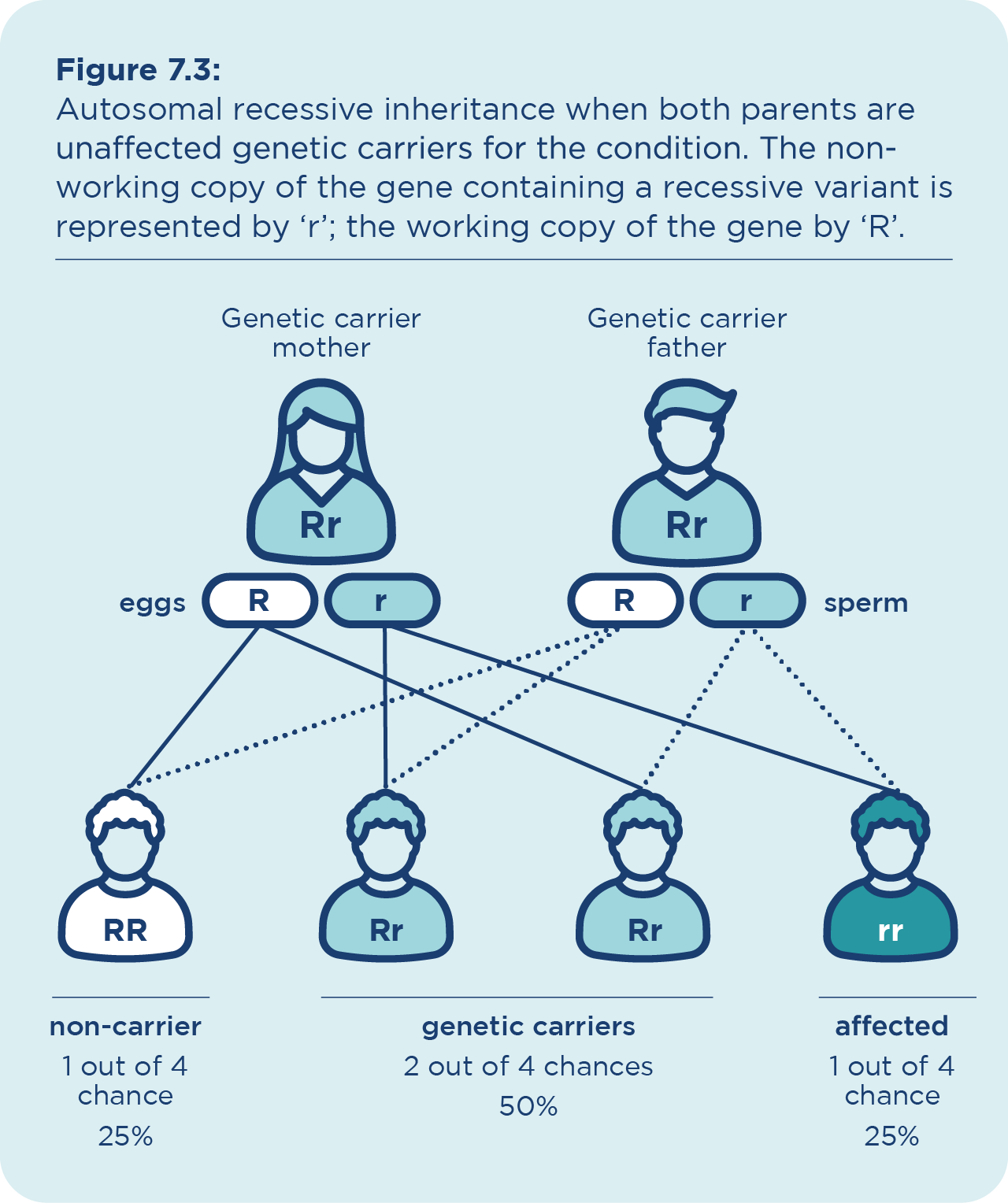
Genetic testing plays a critical role in diagnosing autosomal disorders. Identification of specific genetic alterations responsible for the disorder can be done using different techniques:
- DNA sequencing
- Gene panels
- Chromosomal analysis
These tests enable the facilitating of accurate diagnosis and genetic counseling.
- The management of autosomal disorders focuses on:
- Symptom management
- Supportive care
- Addressing of specific complications associated with each disorder
- Targeted therapies
- Gene-based treatments
Examples Of Autosomal Disorders
There are several autosomal disorders linked with different autosomes. Let’s have a look at some of the common disorders associated with autosomes.
Trisomy 21 (Down Syndrome)
Trisomy 21 is also commonly known as Down syndrome which explains the genetic condition characterized by the presence of an extra copy of autosome 21 in every cell.
- Autosome Number: Trisomy 21 occurs when an individual has 3 copies of autosome 21 instead of the normal 2 copies.
- Symptoms: Trisomy 21 manifests with various physical and cognitive symptoms. Common features include:
- Upward slanting eyes
- A flat nasal bridge
- Small ears
- A single crease across the palm (also known as a Simian crease)
- Small mouth
- Low muscle tone (affects motor skills)
- Intellectual disability and delayed development
- Certain common health conditions (heart defects, hearing loss, or increased susceptibility to infections)

Figure 6: Common symptoms of Trisomy 21, one of the most common autosomal disorders in human beings. Image Credit: Mun.ca
- Genetic Mechanism: Trisomy 21 is primarily a consequence of a “nondisjunction event during cell division event of the cell cycle” that specifically occurs during the formation of egg/s or sperm/s. The phenomenon of nondisjunction can be easily understood as the failure of proper chromosome separation during the cell division process that eventually paves the way for an unequal (and abnormal) distribution of chromosomes in the resulting egg/s or sperm/s. So, when a fertilized egg with an extra/additional copy of autosome 21 implants in the mother’s uterus, it paves the way for the development of a fetus with Trisomy 21.
- Incidence and Risk Factors: Affecting nearly every 1 of 700 human births worldwide, Down syndrome or Trisomy 21 is a quite common autosomal disorder in the human creed. Particular risk factors increase the incidence of Trisomy 21 more than the optimal maternal age (women over the age of 35).
- Management and Support: While humans still haven’t discovered any cure for Trisomy 21, we rely on only early intervention protocols and ongoing support to improve the quality of life for individuals with Down syndrome. There are a variety of therapies available for bettering their life like:
- Physical therapy
- Occupational therapy
- Speech therapy
- Note: These therapies not only address developmental delays but also aid in the improvement of motor skills and the enhancement of communication abilities. Additionally, inclusive education, social support, and medical management are extremely vital to address associated health conditions and ensure the overall well-being of individuals with Trisomy 21.

Figure 7: To spread awareness about Down syndrome, March 21 is celebrated as World Down Syndrome Day. The goal is not just to spread awareness about the risk factors but also to channelize societies to be more empathetic and supportive of people with disorders. Only with inclusivity, we can have a happier global community! ☺ ☺ Image Credit: Down Syndrome Network
Cri du Chat
Cri du Chat syndrome (5p-/5 p minus syndrome) is a rare autosomal genetic disorder that’s caused by the deletion of a portion of autosome 5.
- Autosome Number: Specific part of autosome number 5, i.e. the short arm (p) of the chromosome is either missing or deleted. (Deletion: Typically spontaneous; during the gametogenesis or early embryonic development)
- Symptoms: Inflicted individuals display a range of physical and developmental symptoms:
- High-pitched cry (like a cat’s cry; hence accurately named the “Cri du Chat” meaning ‘cry of the cat’ in French.
- Intellectual disability
- Delayed development
- Distinctive facial features like
- Small head
- Round face
- Wide-set eyes
- Low-set ears
- Low muscle tone
- Feeding difficulties during infancy
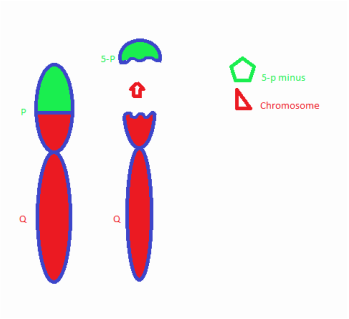
Philadelphia Chromosome
The Philadelphia chromosome is a specific autosomal genetic abnormality that occurs in some individuals with certain types of leukemia.
- Genetic Abnormality: The Philadelphia chromosome is a result of a specific chromosomal translocation, primarily found in individuals with chronic myeloid leukemia (CML) and a subset of acute lymphoblastic leukemia (ALL). It involves the exchange of genetic material between chromosomes 9 and 22.
- Chromosomal Translocation: The Philadelphia chromosome is formed when a portion of chromosome 9, known as the ABL gene, breaks off and attaches to chromosome 22. This fusion creates a new gene called BCR-ABL, which produces a fusion protein with abnormal tyrosine kinase activity. This fusion protein is responsible for the uncontrolled growth and proliferation of white blood cells, leading to the development of leukemia.

Figure 9: A light-hearted cartoon to understand the translocation underlying Philadelphia Chromosome disorder. Image Credit: Meddy Bear - Role in Leukemia: The BCR-ABL fusion protein created by the Philadelphia chromosome causes the “dysregulation of cell signaling pathways involved in cell growth and division”. This leads to the uncontrolled multiplication of abnormal white blood cells, resulting in the characteristic features of leukemia, like:
- Increased white blood cell count
- Increased bone marrow infiltration
- Impaired production of healthy blood cells
- Diagnostic Significance: The presence of the Philadelphia chromosome is a crucial diagnostic marker for chronic myeloid leukemia (CML) and a subset of acute lymphoblastic leukemia (ALL). It can be detected through:
- Cytogenetic analysis
- Fluorescence in situ hybridization (FISH)
- Molecular techniques like polymerase chain reaction (PCR)
- Note: Identification of the Philadelphia chromosome helps confirm the diagnosis and aids in determining appropriate treatment strategies.
- Targeted Therapy: The discovery of the Philadelphia chromosome and the BCR-ABL fusion protein has revolutionized the treatment of CML and Philadelphia chromosome-positive ALL.
- Targeted therapy drugs like tyrosine kinase inhibitors (TKIs) specifically inhibit the activity of the BCR-ABL fusion protein, leading to the suppression of leukemic cell growth.
- These drugs have significantly improved outcomes and transformed CML from a life-threatening condition into a manageable chronic disease for many patients.
- Regular monitoring of the Philadelphia chromosome and BCR-ABL levels is essential to assess treatment response and guide therapeutic decisions.
NOTE IT!
Science Underlying Autosomes and Allosomes
Do you ever wonder about the different types of chromosomes that you have?
As human beings, we have two broad categories of chromosomes namely “autosomes” (non-sex chromosomes) which are 44 in number (22 pairs), and “allosomes” (sex chromosomes) which are a total of 2 in number (1 pair). This is why we say that human beings possess a total of ‘23 pairs of chromosomes’ or ’46 number of chromosomes’.
There are several salient and distinguishing features that differentiate autosomes from allosomes. We have compiled them in the table below.
Table 2: Comprehensive discussion of the contrasting points between autosomes and allosomes (sex chromosomes/gonosomes). | ||
|---|---|---|
| Feature | Autosomes | Allosomes |
| Similarity of the members in a pair | Exists and is high similarity (code for same genes) | May/may not exist (as in XY pair of allosomes) |
| Total number in human diploid genome | 44 in number | 2 in number |
| Total pairs in human diploid genome | 22 pairs of autosomes | 1 pair of allosome |
| Labeling used in cytogenetics | Labeled by numbers (1-22 in humans)/ Numbered chromosomes | Labeled by alphabets (X, Y) |
| Role in the determination of sex | Yes. This is generally negated but interestingly, certain autosomes possess genes that determine the phenotypic sex, like the “SOX9 gene” on autosome 17 or chromosome number 17. Any mutations in the autosome 17 at the SOX9 genic region can lead to the abnormal development of the fetus. (an abnormal female with a chromosome Y) | Definitely yes. As the name goes, both X and Y chromosomes specifically play direct and integral roles in the determination of sex in human beings. |
| Size of chromosomes | Autosomes in 1 pair are almost similar in size. | Allosomes in one pair may (as in XX pair) or may not (as in XY pair) be similar in size |
| Gene Density | Higher in autosomes | Lower in allosomes |
| Recombination | Happens during meiosis | Quite less like the PAR region (rather there is “recombination suppression” in sex chromosomes) |
| Presence of pseudoautosomal regions like PAR1 and PAR2 | No | Yes (these are homologous regions between sex chromosomes, i.e., X chromosome and Y chromosome where recombination happens during meiosis (when usually autosomes recombine). Additionally, these regions also display Mendelian, i.e., autosomal patterns of inheritance rather than strictly sex-linked inheritance patterns. |
| Associated disorders | Disorder linked to autosomes equally affects both males and females. | Allosomal/sex-linked chromosomal disorders can have different manifestations in males and females. |
| Dosage Compensation | No need | Required |
| Evolutionary History | Autosomes are more conserved across species. | Allosomes accumulate more variations across species, thus rapidly evolving, are less conserved, and show noticeable differences. |
| Gene content and roles | Autosomes have a wide variety of genes that are essential for various functions of the body, health, and even phenotypic sex determination. | Allosomes too have a variety of genes. This spectrum is though smaller than the autosomes’ spectrum. Note that in contrast to the common belief that “sex chromosomes only have sex-determining genes”, even Y-chromosome possesses some genes that are essential for the overall survivability and health of males (not a sex-determining role). |
| Main mode of inheritance (inheritance pattern) | Genes on the autosomes typically follow the Mendelian inheritance pattern. | Genes on the allosomes follow various inheritance patterns (like sex-linked inheritance one of which is X-linked inheritance). These patterns are easily noticeable in disorders like color blindness and hemophilia. |
Data Source: Akanksha Saxena of Biology Online
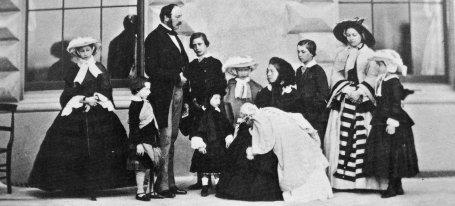
Take the Autosome – Biology Quiz!
References
- Hake, L. & O’Connor, C. (2008) Genetic mechanisms of sex determination. Nature Education 1(1):25
- Jakob, Susanne, and Lovell-Badge, Robin. “Sex Determination and the Control of Sox9 Expression in Mammals.” The FEBS Journal, vol. 278, no. 7, 2011, pp. 1002-1009, https://doi.org/10.1111/j.1742-4658.2011.08029.x
- Schafer, A. J., Dominguez-Steglich, M. A., Guioli, S., Kwok, C., Weller, P. A., Stevanovic, M., … & Foster, J. W. (1995). The role of SOX9 in autosomal sex reversal and campomelic dysplasia. Philosophical Transactions of the Royal Society of London. Series B: Biological Sciences, 350(1333), 271-278.
- Genetic Alliance; The New York-Mid-Atlantic Consortium for Genetic and Newborn Screening Services. Understanding Genetics: A New York, Mid-Atlantic Guide for Patients and Health Professionals. Washington (DC): Genetic Alliance; 2009 Jul 8. APPENDIX E, INHERITANCE PATTERNS. Available from: https://www.ncbi.nlm.nih.gov/books/NBK115561/
- Schacherer, J. (2016). Beyond the simplicity of Mendelian inheritance. Comptes Rendus Biologies, 339(7-8), 284-288.
- Ponnikas, S., Sigeman, H., Abbott, J. K., & Hansson, B. (2018). Why do sex chromosomes stop recombining?. Trends in Genetics, 34(7), 492-503.
- Charlesworth, D. (2017). Evolution of recombination rates between sex chromosomes. Philosophical Transactions of the Royal Society B: Biological Sciences, 372(1736), 20160456.
- Colin Olito , Jessica K Abbott, The evolution of suppressed recombination between sex chromosomes and the lengths of evolutionary strata, Evolution, Volume 77, Issue 4, 1 April 2023, Pages 1077–1090, https://doi.org/10.1093/evolut/qpad023
- McKee, B.D., Handel, M.A. Sex chromosomes, recombination, and chromatin conformation. Chromosoma 102, 71–80 (1993). https://doi.org/10.1007/BF00356023
- Helena Mangs, A., & Morris, B. J. (2007). The Human Pseudoautosomal Region (PAR): Origin, Function and Future. Current genomics, 8(2), 129–136. https://doi.org/10.2174/138920207780368141
- Zhao, R. F., & Scholar, P. D. N. M. D. (2019). The Y chromosome: Beyond gender determination.
- Kenichi Kashimada, Peter Koopman; Sry: the master switch in mammalian sex determination. Development 1 December 2010; 137 (23): 3921–3930. doi: https://doi.org/10.1242/dev.048983
©BiologyOnline.com. Content provided and moderated by Biology Online Editors.
